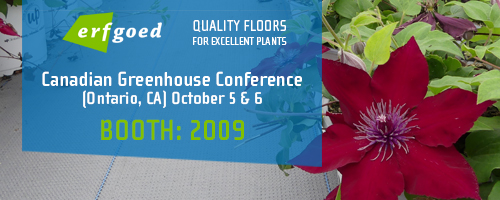Tackling The Tag Room

Ed Overdevest is working toward a solution for a problem that is a thorn in the side of growers everywhere — thousands of dollars of unused plant tags sitting for years in the tag room. By implementing a plan that includes in-house printing for tags that take more than two years to use up and commercial printing for only high-turnover, high-volume plants, Overdevest is slowly whittling down his tag inventory as well as the carrying costs involved in storing many years’ worth of unused tags.
“The cost of in-house printing is pretty significant on a per-unit basis compared with a comparable tag printed commercially,” Overdevest says. “But when you factor in carrying costs, the money invested in tags just sitting there in inventory is pretty significant, and the waste we have in the case of tags that are obsolete is considerable. We also wrestle with relevance issues when tag style or content changes become necessary.”
Overdevest, who with his wife, Gail, owns Overdevest Nurseries, a 60-year-old, 210-acre operation in Bridgeton, N.J., says all these factors are minimized when they print their own tags. This eliminates the need to commit to large print minimums for the many trial varieties they grow. Nor do they have to worry about running out of tags in the middle of shipping. However, he doesn’t claim to have all the answers.
“We don’t have it down to an exact science. We just know given the slow turn we have on the low volume of some of the plants we produce, along with the fact that there’s a decent percentage of plants we ultimately discontinue before we use all the tags, there’s a definite savings there,” Overdevest says.
While Overdevest grows annuals as part of some of their programs, the majority of his material is perennials, trees and shrubs, in containers ranging from 1 gallon to 15 gallons.
“We’re not talking little stick tags,” he says. “In our case, tags are 4- to 6-inch rectangles for some of the larger plant material, and costs can be anywhere from $.08 to $.25 per tag.”
“The Tag Room Is The Enemy”
Bob Lovejoy, president of HIP Labels, which designs and prints custom labels and tags, says, “The tag room is the biggest problem for every grower in America. It’s the biggest problem because it’s probably the biggest chunk of money that goes unused. I have seen tag rooms with hundreds of thousands of dollars of unused tags — some of them ten years old.”
Lovejoy feels it is his company’s job and any responsible suppliers’ responsibility to work with growers on solutions, because excess inventory doesn’t do anyone any good.
“Our enemy is the tag room, not our printing competitors,” he says.
His answer is to offer programs that allow growers to order quantities closer to the time when when they are needed, rather than in the preceding fall when they are guessing what they might need.
“Smaller, more frequent orders that are affordable will allow our customers to a better job of buying not only tags and labels, but wraps and all types of packaging,” Lovejoy says.
Gerry Giorgio, marketing director for MasterTag, agrees that managing tag inventory is a huge problem — especially for large growers. Another big concern is having the tags on hand at planting time. MasterTag offers inventory management as one of its services.
“We say to growers, you do plants really well, we do tags really well. Why don’t you let us manage your inventory? When you need them, we send you the tags,” Giorgio says.
Timing is also an important consideration for Overdevest as they continue to move into their “hybrid” commercial and in-house printing program.
“During this transition, we have come to realize the true costs associated with in-house printing. Equally important, we now have a very real sense of the time that would be involved with printing all our tags in house, especially if we tried to print on-demand as orders are pulled and loaded,” Overdevest says. “All this has shaped our current strategy to one where we purchase pre-printed tags for our higher volume plant varieties and print in-house for the others, where tag inventory would otherwise turn too slowly.”
Platform Tags Reduce Waste, Costs
Overdevest and Lovejoy came up with another solution to help with tag waste and cost — the concept of a “platform” tag. Overdevest compares it to auto manufacturers using a common chassis for several different models of cars.
“We purchase a standard platform tag for our Footprints program (more on that later) and another for our generic program,” he says. “These convey the respective messaging for each program. Then the specifics, including plant name, picture, cultural info, QR code etc., are printed, either commercially or in-house, on a separate tag that attaches into the platform tag to create the uniqueness for each plant. We have some fine tuning to do to achieve a consistent, commercial-quality presentation, but we see this as our best way to build some efficiency and flexibility into the increasing complexity of today’s marketing opportunities.”
Differentiate With Sustainable Tags
Overdevest Nurseries’ Footprints line is primarily herbaceous material, perennials mostly, with some annuals. It is a recently developed regional brand designed to appeal to the emerging interest in sustainability.
“It embodies the considerable commitment we have made over the years to conservation and eco-minded efforts, such as recycling water, energy efficiencies and IPM practices,” Overdevest says. “At the time, those practices were instituted solely with the intent of ‘doing the right thing.’ Now, along with our recent certification by Veriflora, they allow us to truly claim that our plants are sustainably grown.”
The name refers to the carbon footprint, and the labels and pots stay true to the message. Not only does Overdevest use the platform tag with this line, which reduces his costs and produces less waste in unused tags, the tags themselves are made from recycled milk jugs. The plastic is an HIP product called MilkMade, and it is itself recyclable. The insert tags are biodegradeable. So are the pots, which are made from rice hulls.
“It’s a little bit more costly than the conventional option. The tags cost more and the pots cost more. But those people who are concerned about sustainability obviously appreciate it,” Overdevest says. “And once those who maybe aren’t as active from that [environmental] perspective understand the program, they appreciate it as well.”










